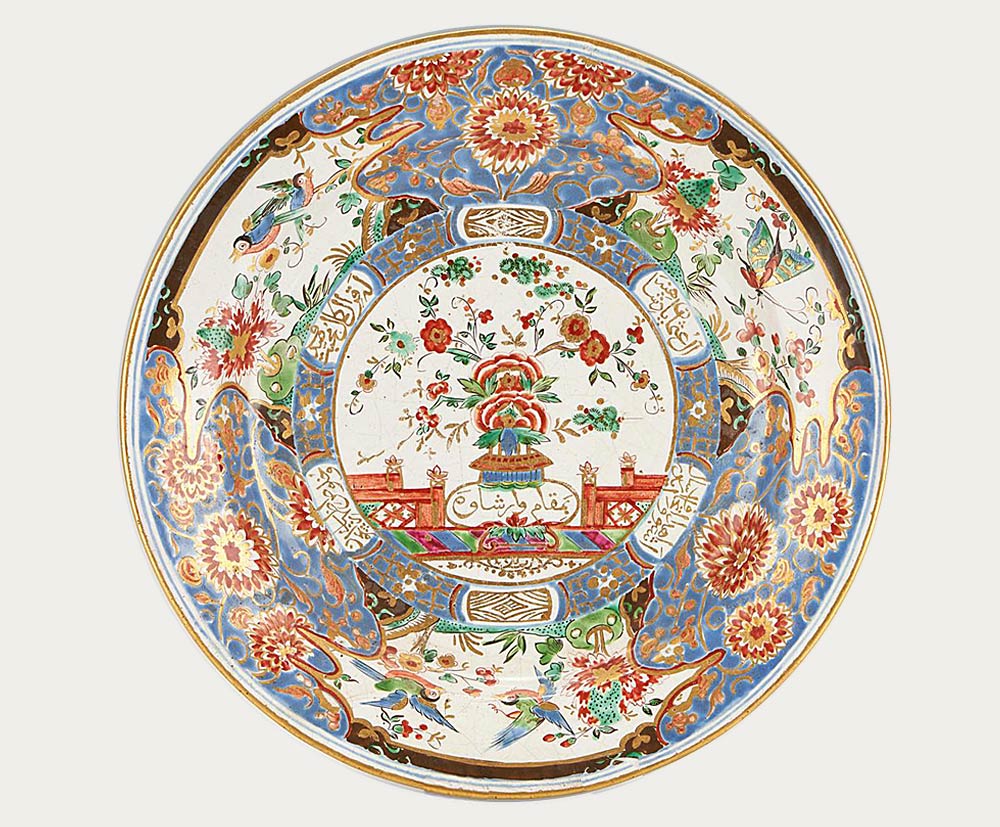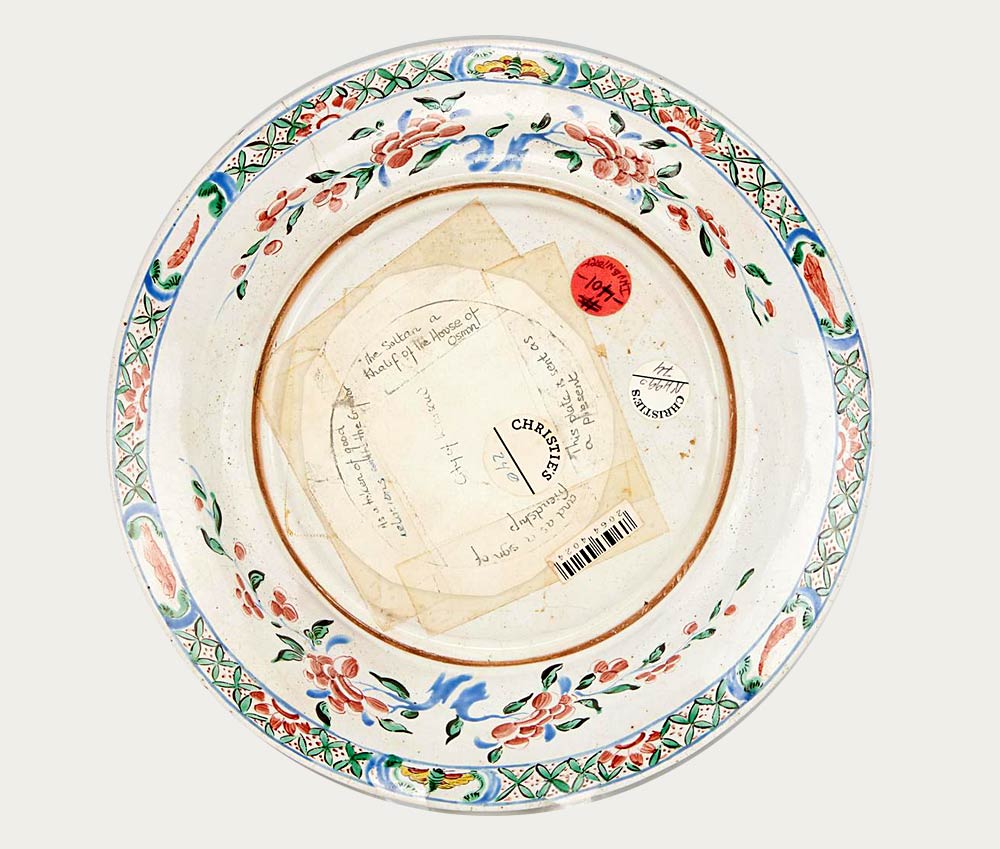Archive
Archive IndexWarsaw Faience Dish
A Warsaw Faience Dish from the service for the Sultan of Türkiye
- Circa 1776 - 77
Decorated in famille verte style, with a central flower vase over a gilt Arabic inscription and flanked by fences within a circular blue ground border decorated with gilt flowers against trellis work alternating with panels of geometric designs and Arabic inscriptions, the rim with three shaped reserves of birds and butterflies flanked by flowers against a blue ground reserved with chrysanthimums and scrolling foliage, the reserve with flowering branches below a brocade border reserved with panels of insects
9in. (23cm.) diam.
A. Polish (Warsaw /Belvedere) faience dated Imari plate from the Sultan Abdul Hamid I service. Center with a hand-painted jardiniere of flowers on a fenced terrace encircled by a blue ground band with six panels divided by gilt trellis ornament, four of the panels with a Turkish inscription, all within a blue ground rim having shaped cartouche decoration depicting birds and a butterfly among flowering shrubs and chrysanthemums. The Turkish inscriptions read: This plate is sent as a present/and as a sign of frienship/as a token of good relations with the Emperor/The Sultan a Khalif of the House of Asman". The rim underside with trailing flowering branches and a diaper border, gilt-line rim. 9 3/4" dia. 3rd Qtr. 18th century.
B.The decoration for this service was inspired by Chinese Kangxi originals dating from 1700-20 imitating the Japanese Imari style. It was given by Stanislas Augustus Poniatowski (King Stanislas II of Poland) to Sultan Abdul Hamid I of Turkey in 1776. The inscription at the well reads: “Obedience & fidelity are due to Kings (center). From the King of the Lehks at Warsaw to the Tsar of the race of Osman as a token of respect this present is offered and sent.”
C.King Stanislas II founded the Belvedere faience factory in Warsaw with the help of Baron Franz Schütter in 1774. They made some fine wares, and were heavily influenced by the famille verte style. They also derived much inspiration for the shapes and decoration of their wares from Meissen of the mid-1730s to the mid-1740s.
D.The Sultan’s service is the most famous work of the Royal Faience Manufacturer at the Belvedere, founded by Stanisław August Poniatowski, operating 1770-1780. This unique set, made in 1776, was sent by the King as a gift to Abdul Hamid I, the Turkish Sultan. A gold inscription in Turkish was painted on the dishes, which reads: The King of Lechites sends these presents and gifts to the Ottoman Padishah to show his love and sincere kindness. Stanisław August used the second set of dishes, without the inscription, in the Royal Castle in Warsaw. Of the 280 dishes created in the Belvedere, 160 went to the Topkapi Palace in Istanbul. Around 80 pieces have survived to this day, 18 of which are in Poland. You will have a unique opportunity to see these dishes, on display for the 1st time ever in Poland. And they are very definitely ornately decorated! They contain everything from stylised chrysanthemums, butterflies and birds and relief lizard forms!


